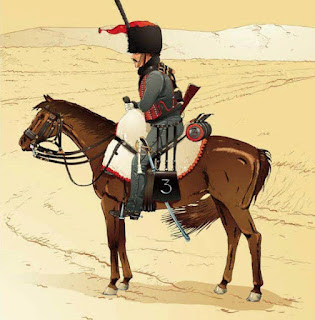Tactical Deployment of a ECW Regiment.
First Example. NMA. Rainsborough's Regiment 1647.
Regiment in line of 2 wings. From 'The complete body of the art military' R Elton 1650 and Roberts P63
The Regiment has 10 Companies, Colonel [C], Lt Col [LC], Major [M], 1, 2, 3, 4, 5, 6 & 7.
Left Right
LC,3,7,4,M 1,5,6,2,C
2 6 10 7 3 4 8 9 5 1
=28 =27
The above is a practical example, the theory was, LC 6 2 5 M 1 4 3 7 C |
| The 10 Companies then split to create a Regiment in 3 blocks ie M-P-M. |
Files were 6 men deep.
A company was 5 files of musketeers, 5 of pikes and 5 more of musketeers, ie 5M 5P 5M. Total =90.
Regiment was 10 companies. 50M 50P 50M = 900.
Second Example, A Regiment in 3 Battalions. Haythornthwaite P56.
3,5,M 1,4,6,C 2,7,LC
6 8 3 4 7 9 1 5 10 2
=17 =21 =17
RANKS AND FILES - Foot and Horse.
At Edgehill.
Horse - Royalist - 3 ranks [Swedish]. Parliment - 6 ranks [Dutch].
Foot - Royalist - 6 ranks [Swedish]. Parliment - 8 ranks [Dutch].
NMA - see above - foot 6 ranks.
Sir Francis Wortley and the Moorlanders. Stafford 1643.
Stafford Castle was hastily made defensible once more with the outbreak of the Civil War in 1642. Parliamentary forces attacked Stafford in May 1643 with the town quickly falling. However the Royalist garrison of the castle, under Lady Isobel Stafford, refused to surrender. A three week siege ensued but in early June the Parliamentarians withdrew as a Royalist army approached under Lord Hastings. By December 1643 Parliamentary forces had returned with siege artillery and the castle was abandoned. It was later slighted to prevent further military use.
The Battle of STRATFORD on AVON 1643.
In February 1643 the town was occupied by Royalist forces under Colonel Wagstaffe, but it was recaptured by Lord Brooke on the 25th after an engagement about 1½ miles out of the town along the road to Warwick. The Royalists drew up their forces under the Welcombe Hills, overlooking the road. Brooke placed his artillery in the van and so disposed the rest of his troops 'that we stood tryangle upon three hills in full view each of other'. A burst of artillery fire threw the Royalists into confusion and they fled back into the town pursued by the attackers 'so fast as our carriages, and the plowd lands well softened with the raine, would permit us'. The town was occupied without further incident except for the destruction of the Town Hall, where three barrels of powder were stored which blew up about an hour afterwards. Having disarmed the town, Brooke returned to Warwick. Prince Rupert passed through on his return from the capture of Lichfield in April and was here again (on 11 July, when he met Henrietta Maria, returning from Holland to join the king at Edgehill. The Queen was then the guest of Susanna Hall, Shakespeare's grand-daughter, at New Place and the occasion was celebrated by bell-ringing and feasting.
Lt James Ellis. 3rd Dragoon Guards (Prince of Wales').
James Ellis was born in 1772. He began his military career in the Somerset Militia in 1797 and later in the infantry.
He married Ann Webb in Exeter in 1804, his first son Thomas was born that same year.
In 1805 he purchased a commission as a cornet, in the 7th Dragoon Guards at a cost of £735, as his pay was only £146 pa this was a big investment. His second son William was born in 1806.
On 14 September 1809 he exchanged to Lieutenant in the 3rd Dragoon Guards, if this was by purchase it would have cost an extra £262 and a new uniform. His pay would only have gone up to £164 pa.
The 3rd had been with Wellington in the Peninsula since April 1809. He sailed out in April 1810 joining them on 3rd May in a party of 35 remounts under Cpt Watts. He was then in the following battles.
Albuera 16th May 1811. As part of DeGrey's Brigade, 3rd Dragoon Guards and 4th Dragoons.
Usage 25th May 1811. Ditto.
Aldea del Pontea 27th September 1811. Ditto.
Maguilla 11th June 1812. As part of Slade's Brigade, 3rd Dragoon Guards and the 1st Dragoons.
Belango 12th June 1812. A small skirmish.
On 1st July 1812, near Albuera, Spain, the 3rd Dragoon Guards provided an outlying piquet for the army, under Cpt Edmond Storey. This was attacked by the French and driven back so far as to fall in with the rest of the squadron (lead by Cpt George Watts), who then counter attacked, capturing men and horses and rescuing those of their own previously taken. This was later celebrated in style with the issue of a double ration of rum. But Lt James Ellis, a sergeant, a trumpeter and two troopers were killed and Cpt Watts seriously injured having to go home to recover. For details of the action see Oman, Volume V, p530.
His death would have left his family penniless, his wife, was entitled to an annual pension of only £40 and an extra £10 pa for each of their two sons, Thomas age 8 and William Webb age 6, from the Royal Compassionate Fund. Planning ahead for their education she moved to Rugby Town because Rugby School offered free scholarships called 'Foundationers' to boys living with in a 10 mile radius of the school clock tower. She was successful and both boys received a free education. William Webb Ellis started at Rugby school in 1816 and was very good at sports but 'inclined not to follow the rules'........ The rest, as they say is history.
 |
| Record of his Peninsular war service. |






No comments:
Post a Comment